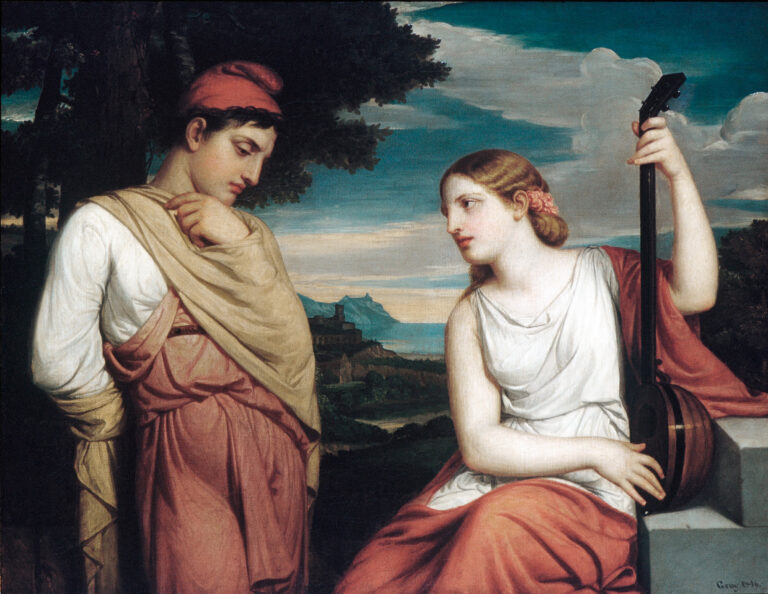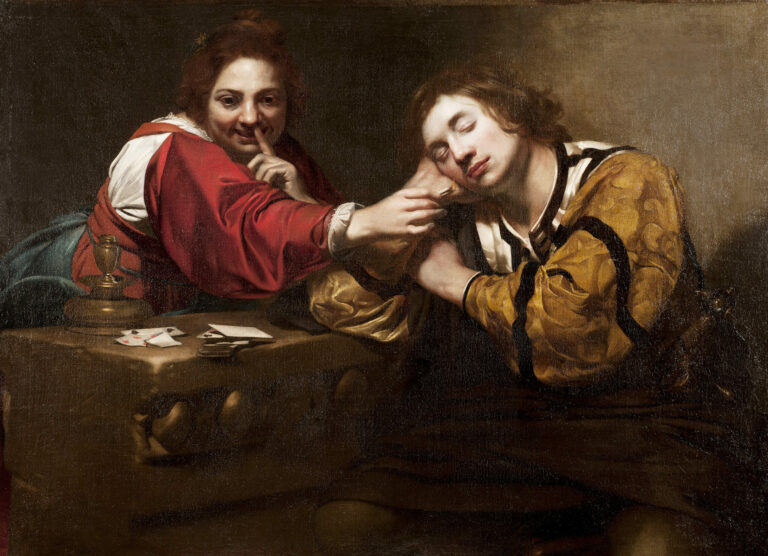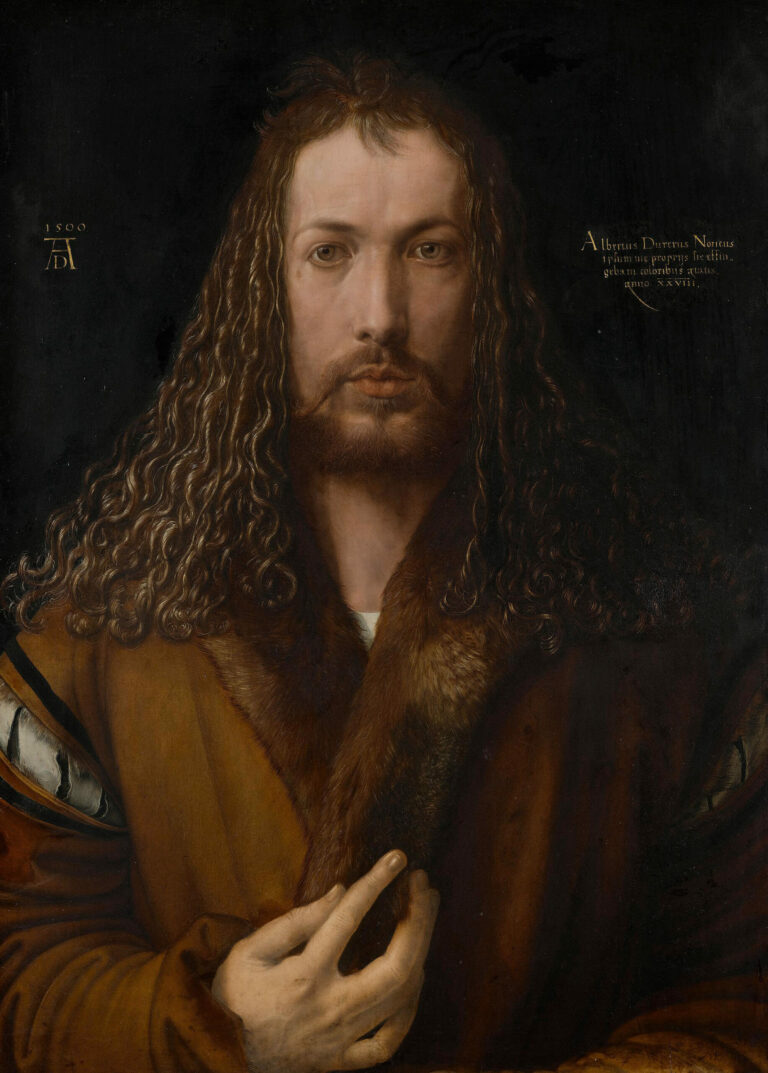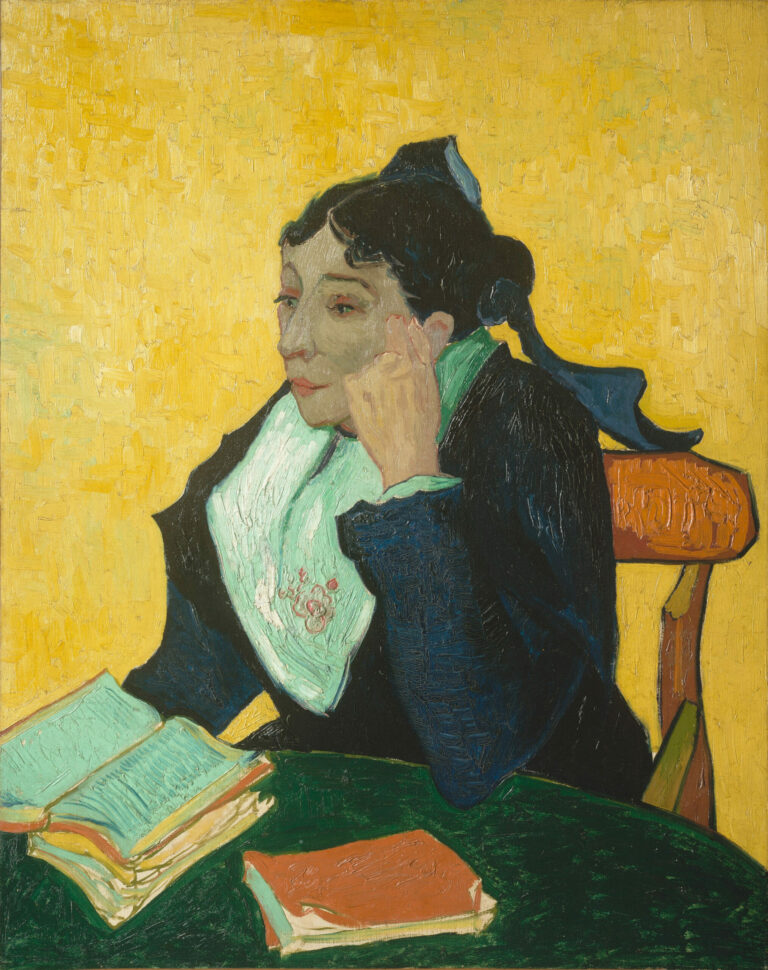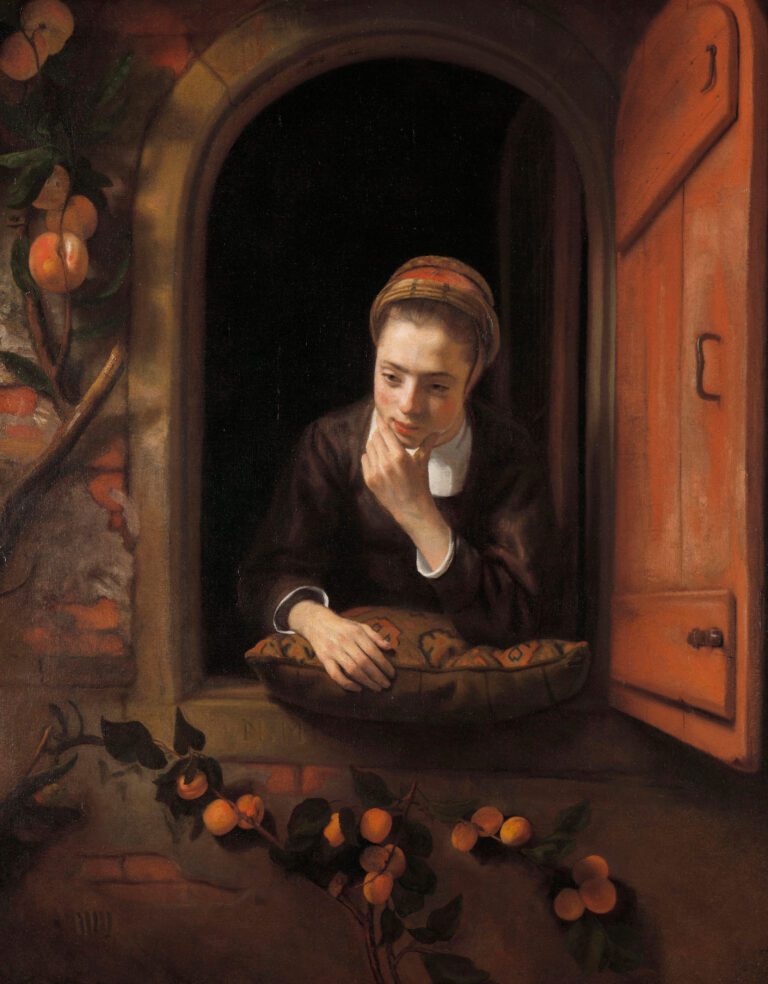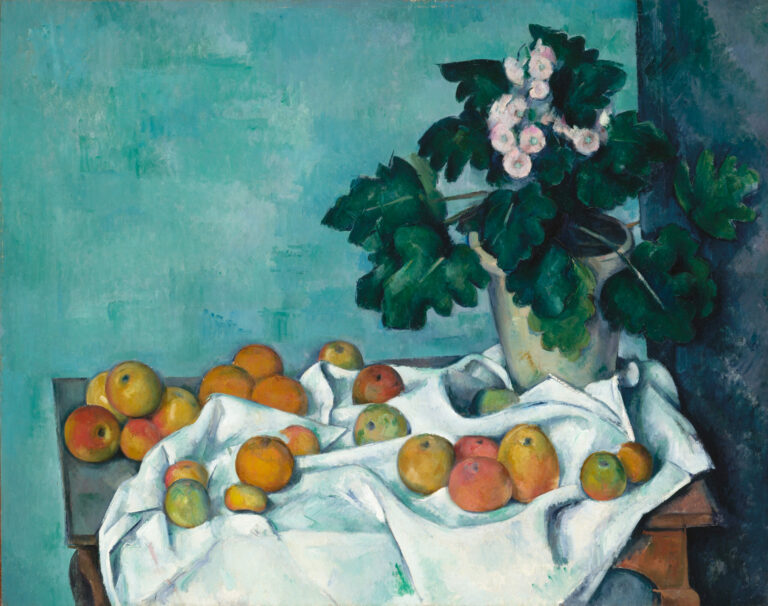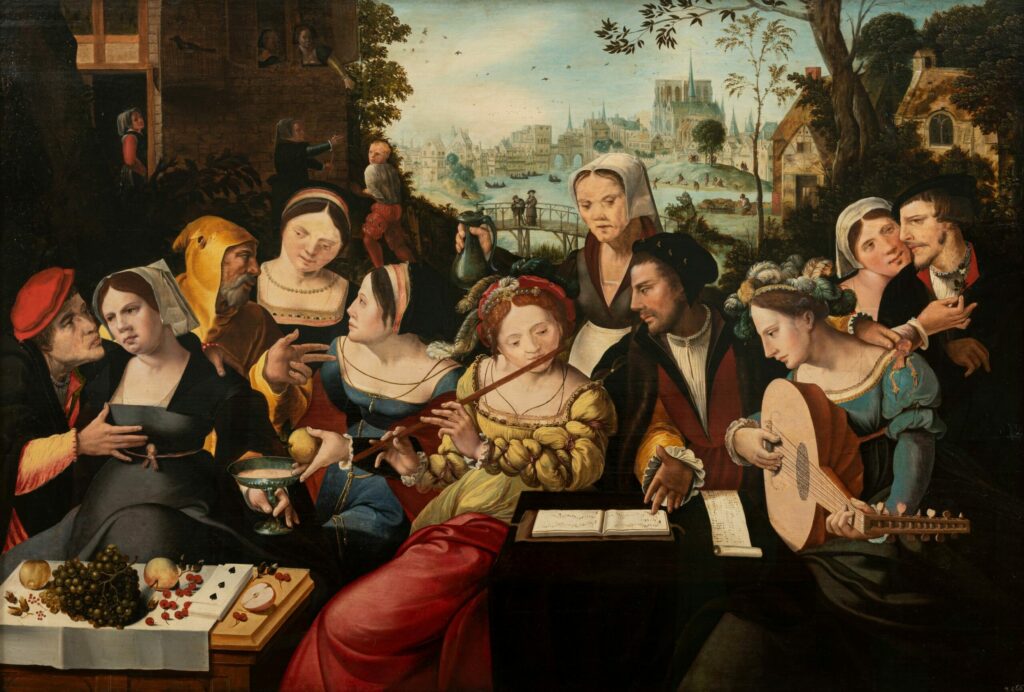
This scene teeming with life plunges us into the unbridled atmosphere of a 16th-century brothel, where the prodigal son squanders his fortune in merry company.
The artist deploys a masterful composition interweaving picturesque characters and symbolic details. In the foreground, a sumptuous still life of fruits evokes earthly pleasures, while playing cards suggest games of chance and perdition. The painting revolves around a group of richly dressed courtesans, accompanied by their clients and a monk in a yellow hood—a moralizing figure recalling the religious dimension of the narrative. Female musicians playing flute and lute create an atmosphere of licentious festivity, while in the background one discerns a view of Paris with the Seine and Notre-Dame Cathedral.
Additional Information
- The Prodigal Son Among Courtesans (also known as Allegory of the Five Senses or The Concert), Flemish School, c. 1530
- 89 x 130 cm
- Paris Museums, Carnavalet Museum, History of Paris
- https://www.parismuseescollections.paris.fr/fr/musee-carnavalet/oeuvres/l-enfant-prodigue-chez-les-courtisanes
The 16th-century Flemish School represents a crucial moment in European art history. Centered primarily around Antwerp, it is characterized by a synthesis between Northern Gothic traditions and Italian Renaissance influences. Flemish painters of this period possessed exceptional technical mastery, particularly in their treatment of details, use of color, and ability to render textures realistically. They excelled in three genres: religious painting, portraiture, and genre scenes depicting daily life. This period witnessed the emergence of a dynamic art market in Antwerp, with workshops organized in an almost industrial manner to meet growing demand, contributing to the diffusion of the Flemish style throughout Europe.

